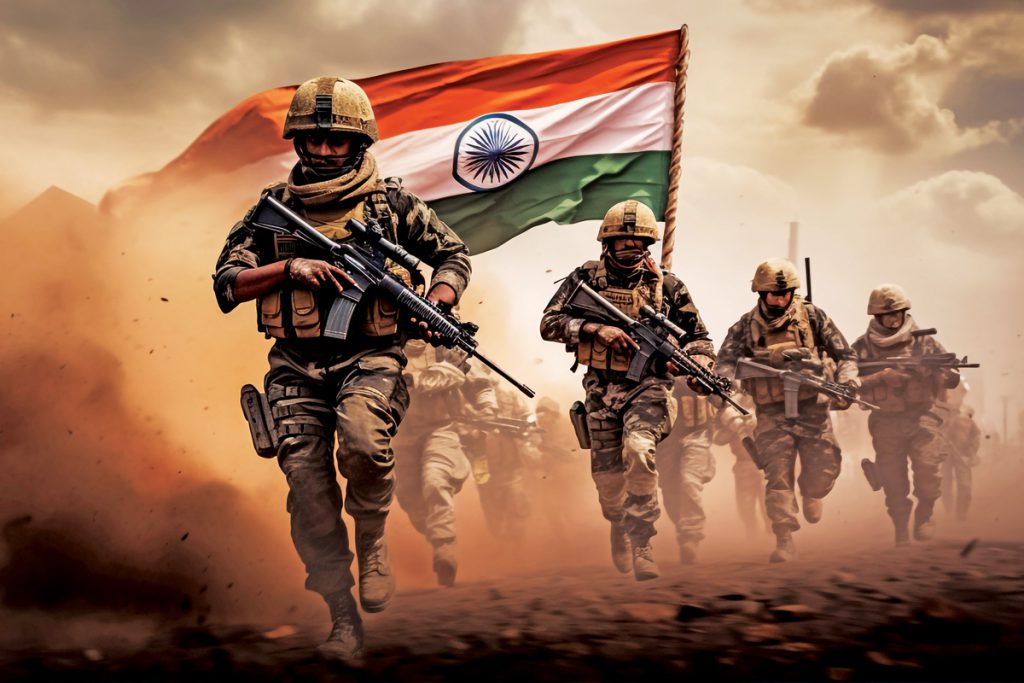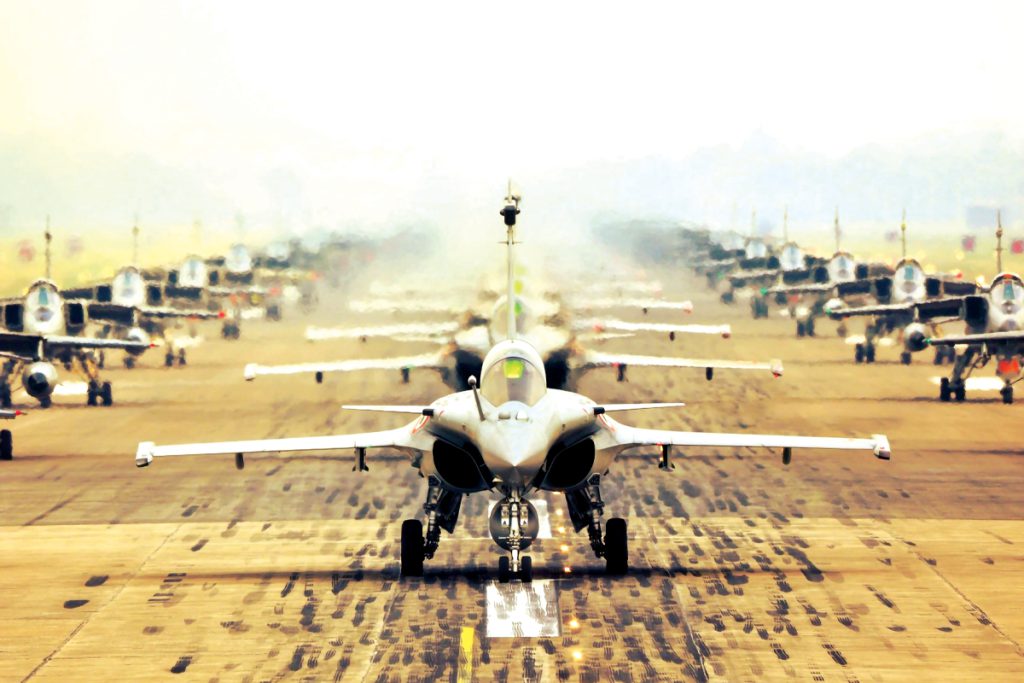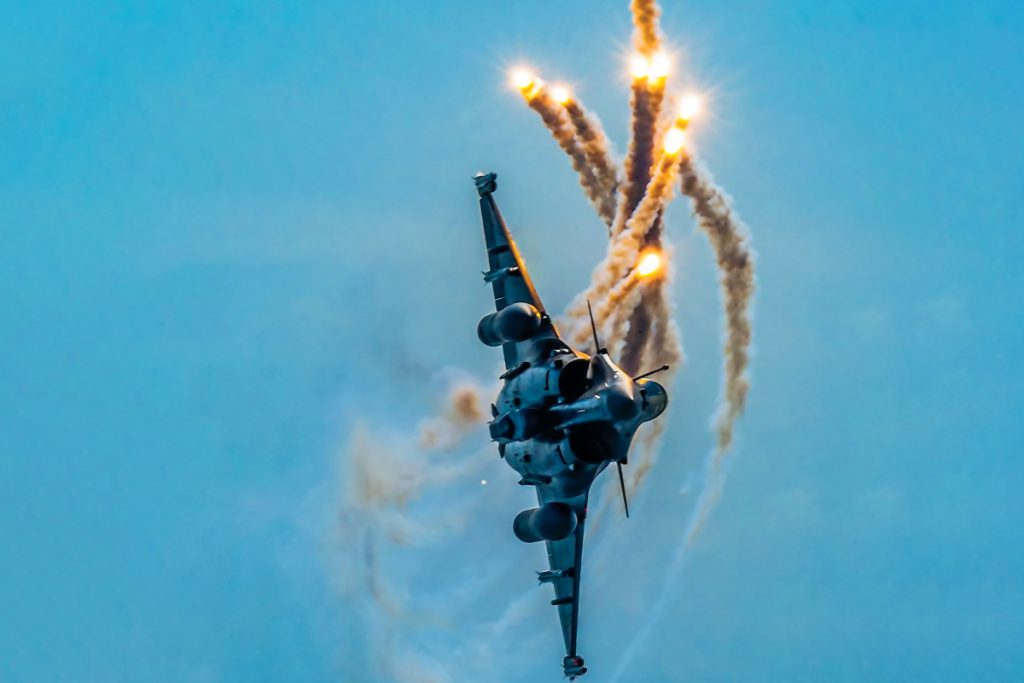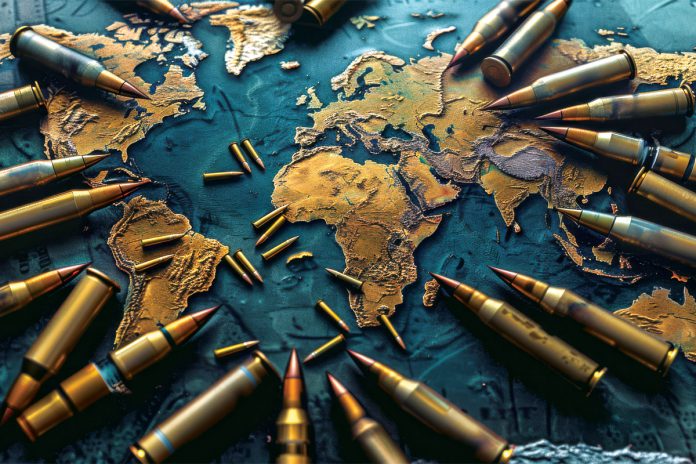India’s balancing act in a post-Pahalgam world will define South Asia’s future, as well as India’s influence on the global economic order long after the reverberations of the attack have subsided
Words by Karan Karayi
A bloody terror strike in Kashmir on April 22 – which killed 26 people, including soldiers and tourists – plunged South Asia towards a dangerous confrontation. New Delhi quickly blamed Pakistan-backed militants and launched retaliatory strikes into Pakistani territory. Pakistan answered with a mix of drone and missile attacks, and hints of nuclear first-use.
By early May both armies stood poised on nuclear alert, and only frantic diplomacy – including U.S. mediation – stopped all-out war. The episode has tested India’s long-standing strategy of strategic autonomy: how to punish cross-border terrorism and deter Pakistan without triggering a catastrophic escalation. For global business leaders, it underlined the risks to stability in a vital region.

Tourist Massacre Sparks a Crisis
On April 22, gunmen massacred 26 Hindu pilgrims and soldiers in Pahalgam, Kashmir. India blamed Jaish-e-Mohammed militants sheltered in Pakistan. On May 7, the Indian Air Force struck suspected terror camps across the Line of Control, marking New Delhi’s toughest response in years. Pakistan reported eight deaths in the raids and vowed retaliation.
In the days that followed both sides exchanged small-scale strikes: Pakistan lobbed rockets and drones into Kashmir; India counter-attacked radar stations and known militant hideouts on Pakistan’s side of Kashmir and beyond. Pakistan’s military even publicized plans for a meeting of its nuclear command, suggesting possible use of tactical nukes. India’s leaders, meanwhile, declared they would not be deterred by “nuclear blackmail,” warning they would strike again if terror did. Veteran defence analysts noted this resembled Pakistan’s usual playbook: escalate just enough to invite international pressure for a ceasefire.
The market reaction was cautious but telling. On May 8 the Bombay Sensex fell about 0.5% as stocks wavered on fears of further escalation. India’s volatility index (the so‑called “fear gauge”) jumped to its highest close since early April. Investors warned that a prolonged clash could deter capital inflows and dent economic growth. For CEOs considering India as a market or investment destination, the message was clear: geopolitical risks remain acute on the Subcontinent.
Nuclear Flashpoint and Global Alarm

This skirmish unfolded under the shadow of two nuclear-armed rivals. Analysts scrambled to assess whether either side might lower its nuclear threshold. India remains officially committed to “no first use” of nukes, and unlike Pakistan has not developed battlefield nuclear weapons. Pakistan, by contrast, maintains a first-use policy to deter large-scale Indian attacks. In public statements Indian officials questioned whether Pakistan could be trusted with its arsenal.
Defence Minister Rajnath Singh even urged the IAEA to “take charge of Pakistan’s nuclear weapons” on the grounds that nukes should not be kept by an “irresponsible, rogue nation”. Though intended as pressure, such rhetoric added to the alarm. By May 10 both armies stood down only after pledges of a ceasefire; the U.S. later confirmed it helped broker talks between the neighbours, a claim denied by some representatives of the Indian government.
The Biden administration and other global powers watched nervously. U.S. President Trump took to social media to claim victory: “after a long night of talks mediated by the US, India and Pakistan have agreed to a full and immediate ceasefire,” he declared. The United Nations warned that neither country could afford a new conflict. A chorus of leaders – from UN Secretary-General António Guterres to Britain’s David Lammy and China’s foreign ministry – urged calm.
Russia’s foreign ministry voiced “deep concern” at the escalation, calling on both sides to exercise restraint after the Pahalgam killings. Japan’s cabinet secretary pointedly urged India and Pakistan to “stabilize the situation through dialogue” to avoid “full-scale conflict”. Even Israel’s envoy to India went out of its way to back India’s right to self-defence, a reminder of New Delhi’s diversifying strategic partnerships.
China, meanwhile, quietly counselled restraint while reinforcing its bond with Pakistan. Beijing “regrets” the clashes, its foreign ministry said, but also sees Islamabad as a key ally in its Belt and Road Initiative. As one analysis noted, Pakistan now relies on Chinese arms for 82% of its imports, making it a Beijing counterweight to India.

Pakistani President Asif Ali Zardari embraces Chinese President Xi Jinping, underscoring Pakistan’s deep alignment with Beijing. This is a key factor in how India manages its cross-border strategy.
The image above of Xi Jinping embracing Pakistan’s president at a February summit underscores that new reality. To India, China’s mediation role is ambiguous: Beijing technically counts New Delhi as an ally in the BRICS bloc, but its insistence on parity in Kashmir and military support for Pakistan limits its usefulness. New Delhi’s diplomatic gambit is to keep China engaged positively (China also urged both sides to “act in the larger interest of peace and stability”) while continuing to build other partnerships.
India’s Calculated Response
Even amid fireworks, India showed remarkable self-restraint. Its retaliatory strikes – dubbed Operation Sindoor – were precise, hitting nine terror camps and air defence sites deep inside Pakistan and Pakistani Kashmir. Indian sources claim these hits destroyed roughly 20% of Pakistan’s Air Force infrastructure, including radar and fighter bases.
Notably, New Delhi avoided any direct assault on Pakistan’s strategic assets or civilian centers. The message was clear: India would punish militant outfits, not launch a broader war. Defence analysts point out that India invoked a Cold Start–style doctrine – swift, limited incursions to punish the enemy – rather than triggering a conventional invasion. Crucially, India’s leaders repeatedly stressed they would not be provoked into first use of nuclear weapons.
This choice reflects India’s long-term balancing act. Delhi has invested heavily in modernising its forces – from new fighter jets to mountain corps – to deter Pakistan. It also remains one of the few nuclear powers without battlefield nukes, partly because its strategy (inspired by the Cold Start doctrine) is to rely on rapid conventional deterrence.
Pakistani officials hinted at tactical nuclear responses, but Indian officials noted that developing such weapons would make South Asia vastly more unstable. In private some Indian strategists judge Pakistan’s nuclear threats to be a bluff, used to draw international attention rather than a serious readiness to launch a nuclear strike.

Strategic Autonomy and Alliances
India’s handling of the crisis also underscores its pursuit of strategic autonomy – courting friends on all sides. Washington, despite prior Trump rhetoric about “indispensable” status, spent weeks on the sidelines of the India-Pak dispute, urging restraint but letting South Asian rivals quail.
Trump’s vacuum after the strikes was filled by new actors: in part because New Delhi had spent years building ties with them. For example, the U.S. has steadily deepened military cooperation with India. In recent months India signed agreements like BECA and COMCASA (enhancing intelligence and communications sharing), joined large-scale joint exercises, and declared the U.S. its top defence partner. Even before this crisis, Modi and Trump had publicly touted a new “strong relationship”.
At the same time, India moved to shore up other friends. It was heartened when several Gulf and African nations endorsed its anti-terror stance, reflecting Delhi’s diplomatic outreach to the Global South. In recent years India has led initiatives like the International Solar Alliance and Indo-Pacific Oceans Initiative, building coalitions among developing countries. This “multi-alignment” philosophy – highlighted by global strategists – means India seeks cooperative relationships rather than asking partners to choose sides.
Thus, while Russia (historically India’s main arms supplier) was cautious in its public statements, India quietly relied on Moscow to restrain Islamabad. Indeed, Russia’s foreign ministry condemned terrorism and urged both parties to exercise restraint, implicitly backing India’s perspective without directly alienating Pakistan.
Meanwhile, India’s economic and diplomatic maneuvering continued. Traders noted that India’s pursuit of new markets could help cushion geopolitical shocks. For instance, in early May New Delhi reaffirmed plans to complete a free-trade agreement with the European Union by year’s end. At nearly the same time, India and the United Kingdom finalized a “historic” bilateral trade pact, projecting it would boost two-way commerce by billions annually. By diversifying trade ties – even as it remains open to U.S. talks (India even offered Trump a “zero tariff” deal) – India aims to insulate its economy from regional conflict and global protectionism.
The Steady Hand
The Pahalgam crisis showed the risks and limits of India’s policy. Militarily, New Delhi demonstrated credible retaliation without sliding into full-scale war. Diplomatically, its careful courting of multiple powers yielded support and mediation when needed. Economically, India still faces headwinds – markets shy away from geopolitical risk – but its breadth of partnerships offers resilience. Perhaps, the era of rigid blocs is over; New Delhi must weave national security, economic, and diplomatic goals in tandem.

For CEOs and global strategists, the lesson is clear: India cannot be pigeonholed into a single camp. Its balanced response – tough on terrorism, but alert to nuclear danger – reflects a mature, multidimensional strategy.
Yet the tragedy is that only foreign mediation ended the crisis. In this new multipolar era, India must nurture its role as a stabilizer: a regional heavyweight that can deter aggression while rallying international support. That balancing act will define South Asia’s future – and influence global economic confidence – long after this flare-up has faded.


